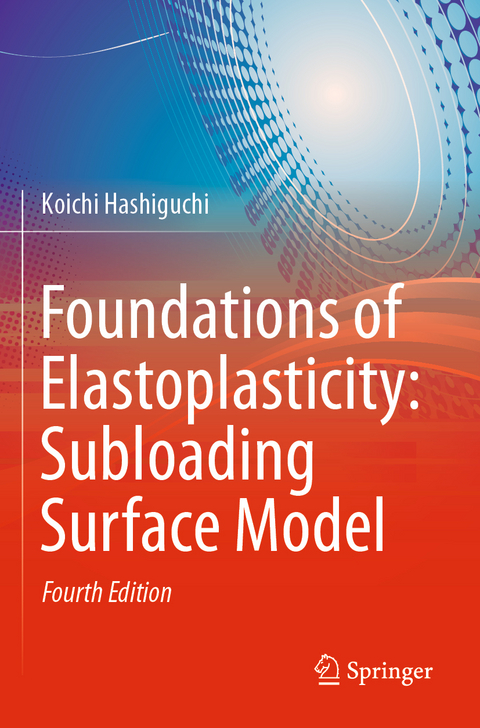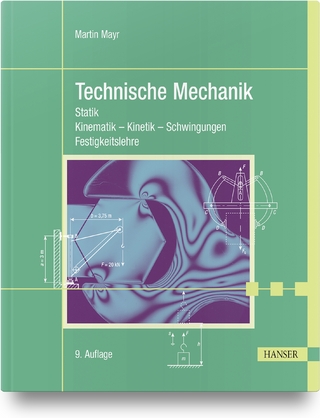
Foundations of Elastoplasticity: Subloading Surface Model
Springer International Publishing (Verlag)
978-3-030-93140-7 (ISBN)
This book is the standard text book for elastoplasticity/viscoplasticity which is explained comprehensively covering the rate-independent to -dependent finite deformations of metals, soils, polymers, crystal plasticity, etc. and the friction phenomenon. Concise explanations on vector-tensor analysis and continuum mechanics are provided first, covering the underlying physical concepts, e.g. various time-derivatives, pull-back and push-forward operations, work-conjugacy and multiplicative decomposition of deformation gradient tensor. Then, the rigorous elastoplastic/viscoplastic model, called the subloading surface model, is explained comprehensively, which is based on the subloading surface concept to describe the continuous development of the plastic/viscoplastic strain rate as the stress approaches to the yield surface, while it can never be described by the other plasticity models, e.g. the Chaboche-Ohno and the Dafalias-Yoshida models assuming the purely-elastic domain. The main features of the subloading surface model are as follows:
1) The subloading surface concept underling the cyclic plasticity is introduced, which insists that the plastic deformation develops as the stress approaches the yield surface. Thus, the smooth elastic-plastic transition leading to the continuous variation of the tangent stiffness modulus is described always.
2) The subloading-overstress model is formulated by which the elastoplastic deformation during the quasi-static loading and the viscoplastic deformation during the dynamic and impact loading can be described by the unified equation. Then, only this model can be used to describe the deformation in the general rate of deformation, disusing the elastoplastic constitutive equation.
3) The hyperelastic-based (visco)plasticity based on the multiplicative decomposition of deformation gradienttensor and the subloading surface model is formulated for the exact descriptions of the finite elastic and (visco)plastic deformations.
4) The subloading-friction model is formulated for the exact description of the dry and the fluid (lubricated) frictions at the general rate of sliding from the static to the impact sliding.
Thus, all the elastic and inelastic deformation/sliding phenomena of solids can be described accurately in the unified equation by the subloading-overstress model. The subloading surface model will be engraved as the governing law of irreversible deformation of solids in the history of solid mechanics.
Dr. Koichi Hashiguchi is currently a head of solids and structure solutions, Ltd. and an Emeritus Professor at Kyushu University. He is the author of over 300 peer-reviewed journal papers, fellows of the Japan Society of Mechanical Engineers and of Civil Engineers, an Honorary Member of the Japanese Geotechnical Society, and also a Member of the Engineering Academy of Japan. He has additionally authored 6 books and co-authored one book on elasto-plasticity/viscoplasticity for finite deformation.
Mathematical Preliminaries: Vector and Tensor Analysis.- Description of Motion.- Description of Tensor (Rate) in Convected Coordinate System.- Deformation/Rotation Tensors.- Stress Tensors and Conservation Laws.- Objectivity and Objective (Rate) Tensors.- Elastic Constitutive Equations.- Elastoplastic Constitutive Equations.- Unconventional Elastoplasticity Model: Subloading Surface model.- Cyclic Plasticity Model: Critical Reviews and Assessments.- Extended Subloading Surface Model.- Constitutive Equations of Metals.- Constitutive Equations of Soils.- Subloading-overstress model.- Subloading-Damage Model.- Subloading Phase-transformation Model.- Multiplicative Hyperelastic-based Plasticity with Subloading Surface Concept.- Viscoelastic-viscoplastic Model of Polymers.- Corotational Rate Tensors.- Localization of Deformation.- Hypoelastic- and Multiplicative Hyperelastic-based CrystalPlasticity.- Constitutive Equation for Friction: Subloading-friction Model.
| Erscheinungsdatum | 14.06.2024 |
|---|---|
| Zusatzinfo | XX, 853 p. 551 illus., 179 illus. in color. |
| Verlagsort | Cham |
| Sprache | englisch |
| Maße | 155 x 235 mm |
| Themenwelt | Naturwissenschaften ► Physik / Astronomie ► Mechanik |
| Technik ► Maschinenbau | |
| Schlagworte | constitutive equation • Crystal plasticity • damage • Elasticity • Friction • metals • Plasticity • Polymer • soils • viscoplasticity |
| ISBN-10 | 3-030-93140-4 / 3030931404 |
| ISBN-13 | 978-3-030-93140-7 / 9783030931407 |
| Zustand | Neuware |
| Informationen gemäß Produktsicherheitsverordnung (GPSR) | |
| Haben Sie eine Frage zum Produkt? |
aus dem Bereich


